The OnePlus Watch 2R exceeded my low fitness expectations

The marketing for the new OnePlus Watch 2R bills it as a sporty, durable Wear OS watch meant to “inspire an active lifestyle,” with a lighter design for “those who value all-day fitness tracking.” I like watches that speak directly to me, but my colleagues who tested the OnePlus Watch 2 called its health data its Achilles heel. So I decided to test the Watch 2R’s accuracy for myself.
With the original OnePlus Watch 2, our tester Harish complained that it “just wasn’t reliable in terms of daily step counting or activity tracking,” that it misjudged calories burned after workouts, and that its stress data was artificially high.
Meanwhile, my colleague Nick did a week-long test with the OnePlus Watch 2 and had similar complaints about underestimated steps and significantly lower heart rate numbers during anaerobic workouts. Both Nick and Harish suspected that the watch was using its low-power RTOS coprocessor to handle health and fitness sampling and wasn’t fast or consistent enough to get decent measurements.
That made me wary of testing the OnePlus Watch 2R, a fitness watch that theoretically couldn’t handle fitness very well. So, just like my Galaxy Watch Ultra fitness test last week, I strapped on two smartwatches to see how the Watch 2R could compete with my Garmin Forerunner 965 in terms of heart rate and dual-band GPS accuracy.
Fitness test of my OnePlus Watch 2R

OnePlus’ OHealth companion app doesn’t let you export TCX/GPX files like Samsung Health does, and I had some issues getting Health Connect to send my data properly, so I couldn’t do my usual HR or GPS graphs for direct comparison; I’ll use tables as an alternative for now.
| Race n°1 | OnePlus Watch 2R | Garmin Forerunner 965 |
|---|---|---|
| Distance | 3.05 miles | 3.09 miles |
| Average/max FC. | 146 bpm / 159 bpm | 147 bpm / 158 bpm |
| Cadence | 161 steps per minute | 162 steps per minute |
| Stride length | 3.28 feet | 3.35 feet |
| Average vertical ratio | 8.8% | 8.7% |
| Average ground contact time | 301 ms | 283 ms |
| Calories burned | 318 kcal | 421 kcal |
For my first run, the OnePlus Watch 2R stayed largely on track with the Garmin Forerunner 965. I spot-checked heart rates at ten different times, and the 2R matched the 965 four times and was 1 bpm lower six times, which is consistent with the 1 bpm lower average.
GPS accuracy remained generally on point. It’s hard to say whether the OnePlus’s dual-band accuracy is more or less reliable than the Garmin’s, as both maps had me straying off the pavement at odd times, but I appreciated that both were in the same general range for a run with foliage blocking the signal.
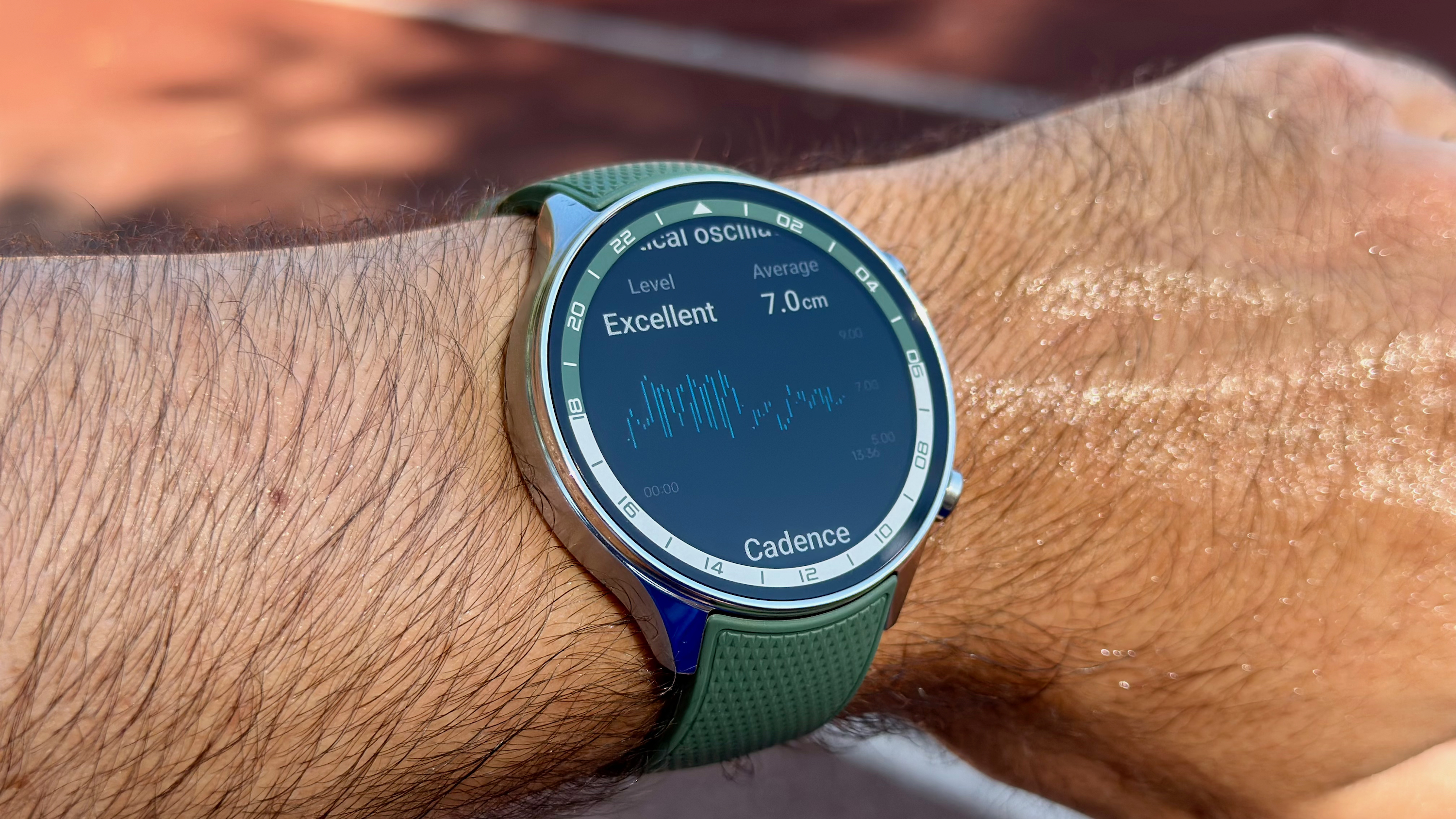
When it comes to running dynamics, the OnePlus Watch 2R synced up pretty well for stride length and average vertical ratio, but measured my vertical oscillation as 1cm shorter and average ground contact time as 18ms longer.
| Race n°2 | OnePlus Watch 2R | Garmin Forerunner 965 |
|---|---|---|
| Distance | 3,315 meters | 3,220 meters |
| Average/max FC. | 174 bpm / 191 bpm | 176 bpm / 191 bpm |
| Cadence | 180 steps per minute | 174 steps per minute |
| Stride length | 4.42 feet | 4.43 feet |
| Average vertical ratio | 6.0% | 6.6% |
| Average ground contact time | 241 ms | 223 ms |
| Calories burned | 194 kcal | 229 kcal |
I ran eight 400m laps for my second track race, and Garmin stayed on track as expected, as it uses recorded track maps to assess your likely position. OnePlus had more issues: the Watch 2R vibrated my wrist with lap or kilometre times at around 350m, consistently. It was as if the starting point was completely wrong, but then the GPS was pinpoint accurate when I reached that incorrect spot. Still, it threw off my calculated pace by a decent margin.
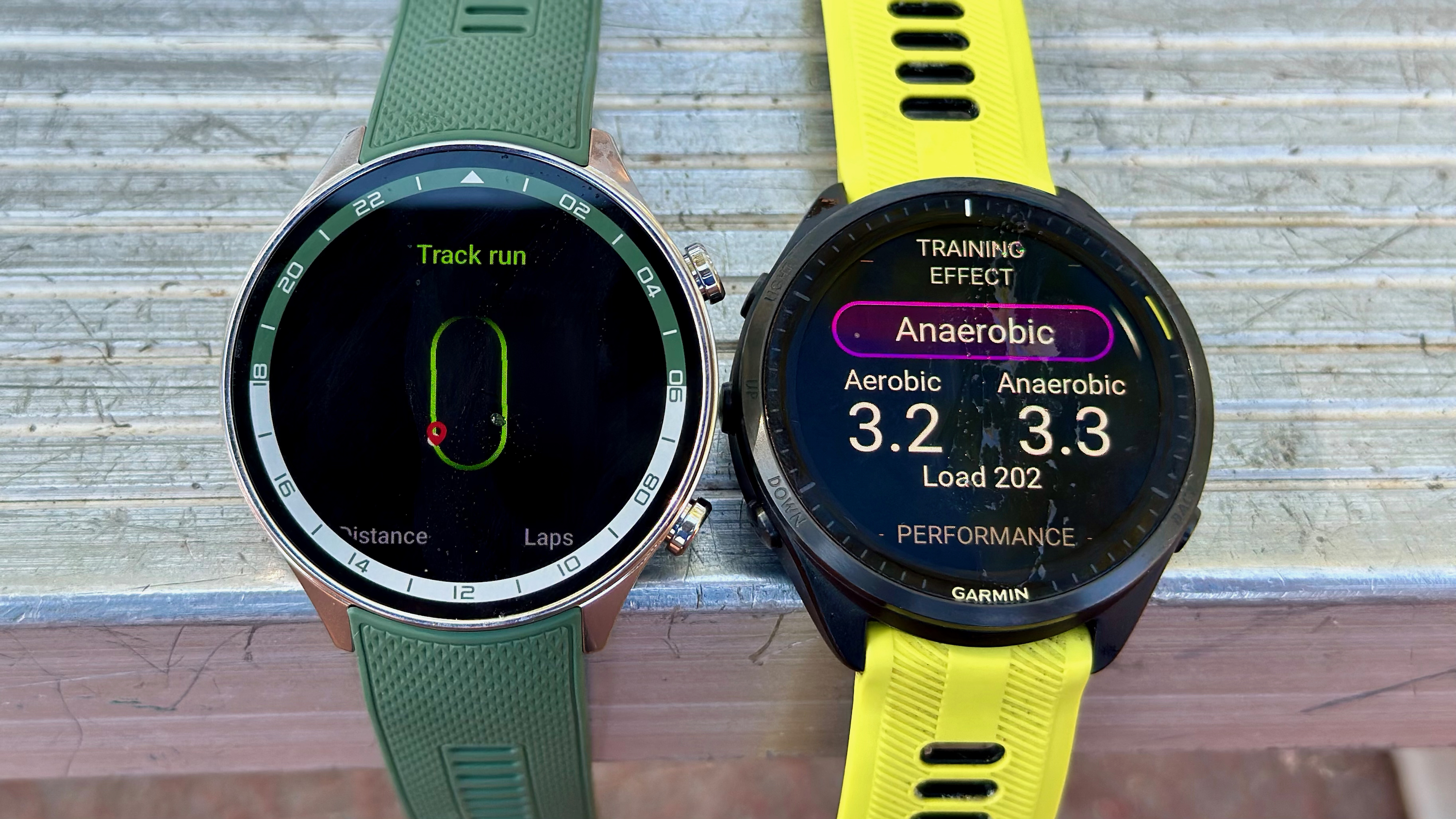
I had thought heart rate for an intense track workout would be the sticking point, but its HR average was more accurate than the Galaxy Watch Ultra’s during my track workout last week. It was certainly off the Garmin’s results (typically 1-3 bpm off at any given time), but generally settled in around the right number given enough time. Certainly, the Watch 2R did much better than the Watch 2 in this area.
Again, OnePlus’ running dynamics data diverges slightly from Garmin’s. I’m not sure how OnePlus could tell I was taking more steps per minute while keeping my feet on the ground longer. However, I realized after my run that OHealth listed my height as 5’7” (I’m 6’1”), which may have skewed the results for things like vertical oscillation. Regardless, running form data isn’t worth obsessing over, in my opinion.
Overall impressions of the OnePlus Watch 2R fitness
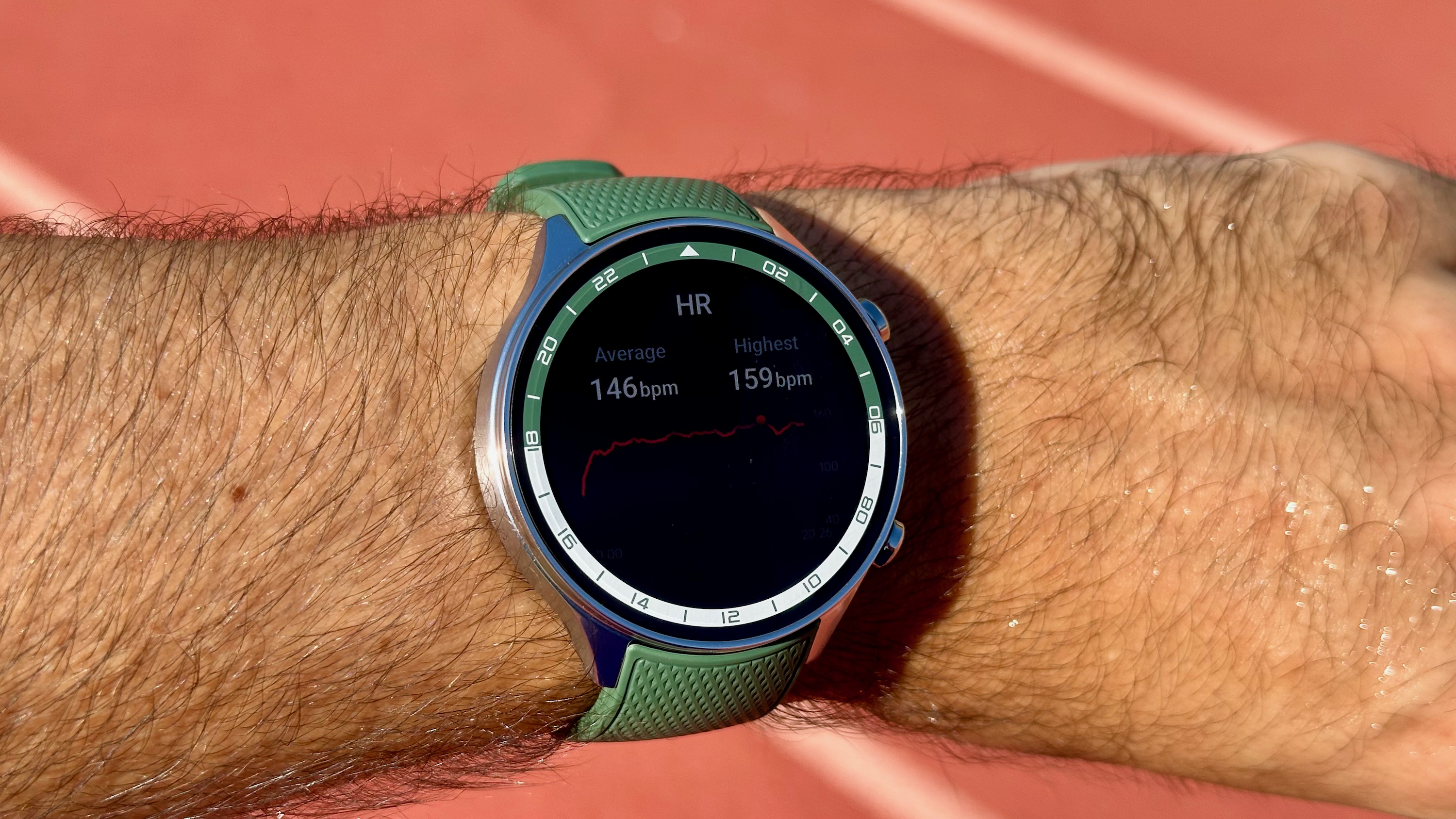
It may just be a case of low expectations skewing my impressions, but the OnePlus Watch 2R feels like a budget fitness watch. It has a comfortable weight for its screen size, three-day battery life with Wear OS 4, Google Assistant, and a $229 price tag that I’d expect from an Amazfit watch — not something with proper app support.
OHealth provides in-depth and surprisingly accessible running data, offering detailed context for stats like training effect, running dynamics, VO2 Max, and recovery time—although Garmin wants me to rest an extra day and my VO2 Max is slightly lower.
That said, it’s still pretty basic compared to other fitness apps. OHealth provides plenty of individual running data, but its long-term training load and workout summary data are pretty simplistic. If I were using the Watch 2R long-term, I’d probably automatically sync the data to Strava and rely on that instead.
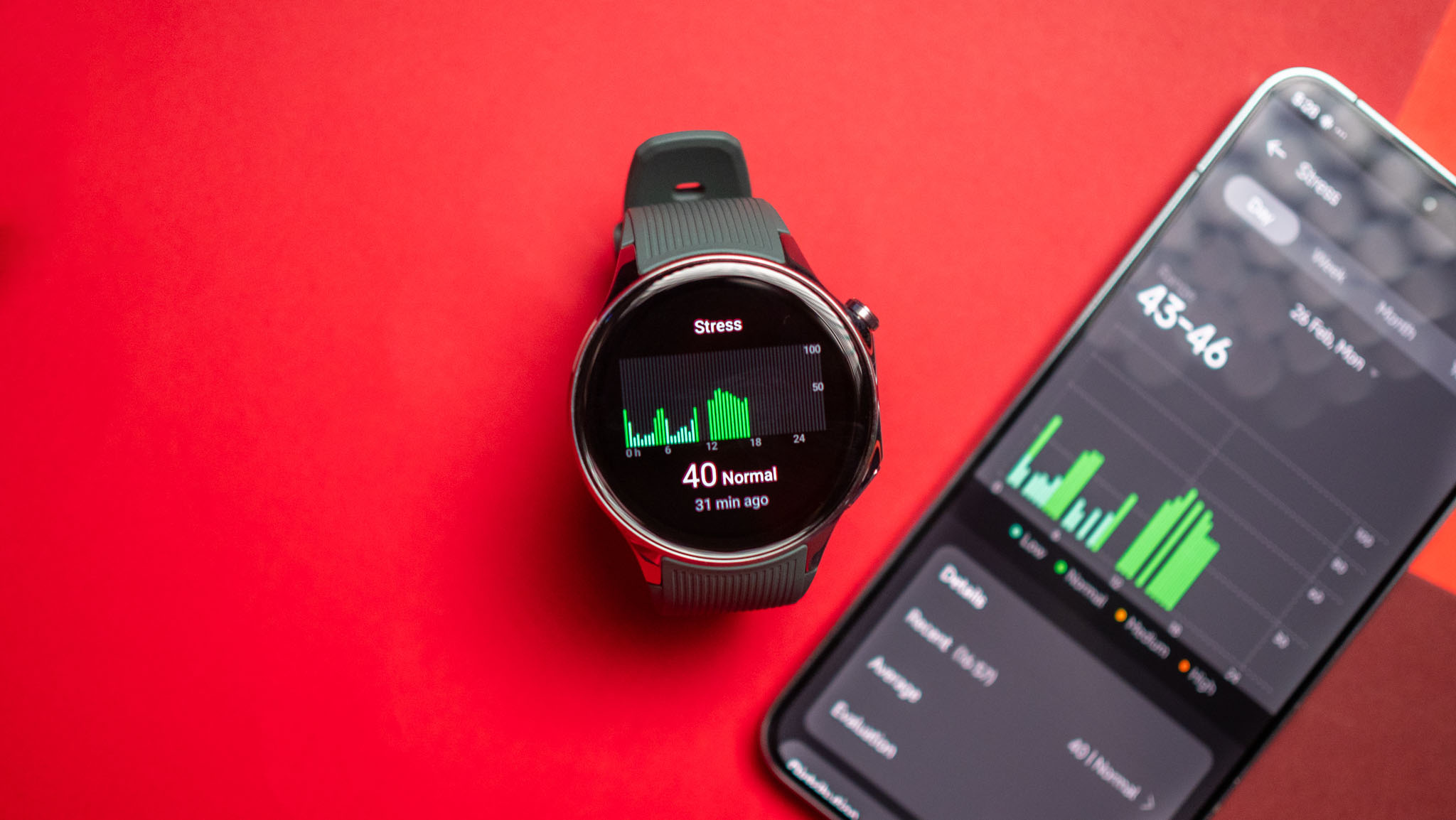
Getting back to my colleagues’ complaints about the original OnePlus Watch 2, my final step counts on both runs were 11,670 for the Forerunner 965 and 11,560 for the Watch 2R.
Garmin watches beat all other brands in my first and second step counting tests, so I’ll consider the first number an accurate control group. An error of about 100 steps over 11,000 steps is almost a rounding error, and significantly better than the OnePlus Watch 2 compared to the Pixel Watch 2 over the same distance (1,860 fewer steps). The same goes for my recent test of the Galaxy Watch Ultra against the Forerunner 965 after 10,000 steps (348 fewer steps).
OnePlus underestimated my calories burned compared to Garmin, but to be fair, I Never I’ve seen two watch brands agree on how many calories you’ve burned. I’m not sure what’s behind that algorithm and how to determine which ones are flattering you or selling you short. So I’m not too worried about OnePlus seeming to be on the lower end of the spectrum, as it’s just an estimate.
In fact, my biggest gripe with the OnePlus Watch 2R is the same one I have with the Galaxy Watch Ultra: the lack of a crown. OnePlus gave the Watch 2 an inactive crown that spins and does nothing, whereas the Watch 2 has two simple buttons, one of which displays workouts by default unless you change the shortcut. I appreciate that, but the sweat-stained screens in the photos above should show why I don’t like relying on swipes during workouts. Give me up/down buttons or a crown any day.
I need more time to write a full OnePlus Watch 2R review that delves deeper into the health and sleep aspects. But I’m much more optimistic about its chances of being useful for casual athletes than I was a week ago — and of rivaling the best cheap Android watches in terms of quality.
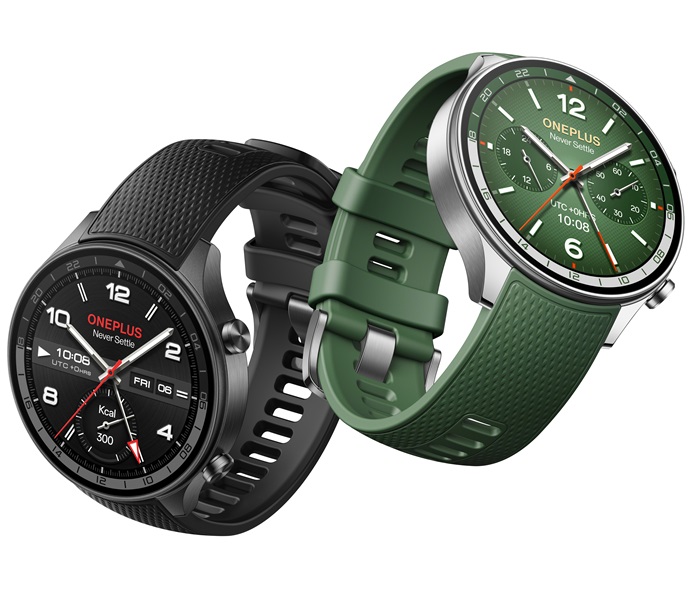
Affordable Wear OS fitness watch
The OnePlus Watch 2R features a Snapdragon W5 processor, a 500mAh battery, a 1.43-inch display, dual-band GPS, NFC tap-to-pay, Google Assistant, and detailed post-run metrics. It’s not as sleek or rugged as the original Watch 2, but it’s much lighter, more affordable, and doesn’t seem to have the same heart rate issues.




